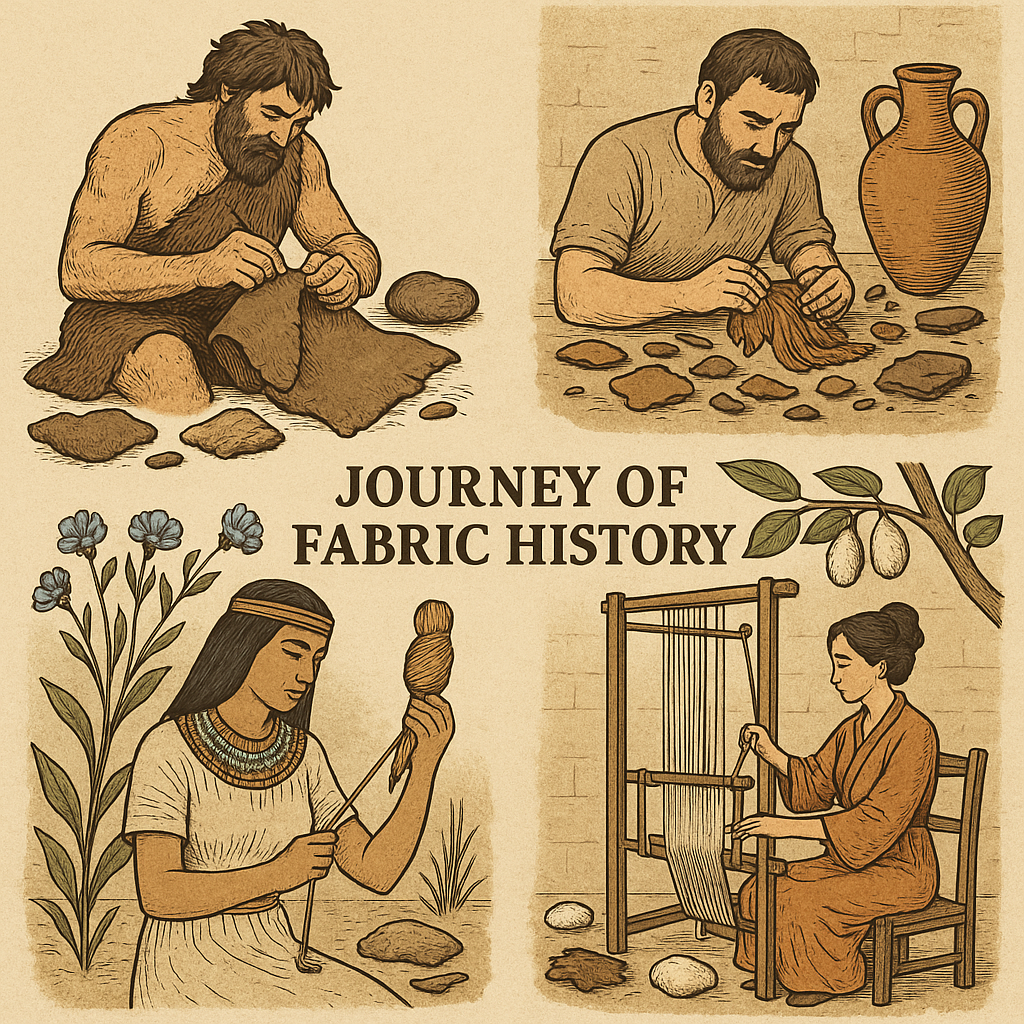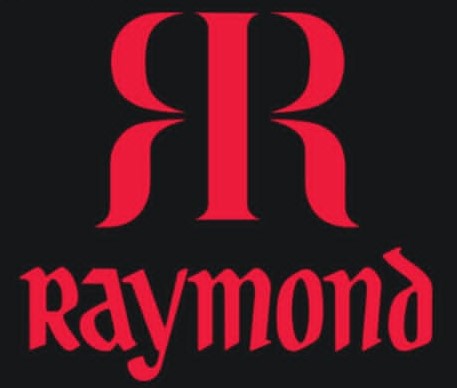journey of fabric history

1. Origins in Prehistory (up to 4000 BC)
Humanity’s earliest textiles likely began as animal skins and primitive felts used for warmth and modesty. Archaeological findings of dyed flax fibers in Georgia (~36,000 BP) and textile impressions on clay (~27,000 BC in the Czech Republic) reveal that fibers were spun and woven much earlier than once believed. In the Near East, linen from cultivated flax emerged. Soon after, silk—from silkworms—appeared in China (~5000–3000 BC), followed by cotton in India (~4000–3000 BC), and then wool from sheep (~3000 BC). These fibers laid the foundation for early human civilization and mark the beginning of the remarkable journey of fabric history.
2. Techniques & Tools: How Fabrics Took Shape (6000–3000 BC)
Textile production was labour‑intensive. After harvesting flax or shearing sheep, fibers were retted, combed, and spun using drop spindles, sometimes with a whorl for weight . Looms, whether horizontal or warp-weighted, transformed yarn into fabric. Imprints on pottery, clay loom weights, and spindle whorls confirm daily textile production in prehistoric settlements
3. Ancient Civilizations: Egypt, India, China (6000 BC – 1st Millennium AD)
- Egypt: Linen was central—used in tunics, sails, burial shrouds and mummification bandages. Techniques included warp-weighted looms, with both linen and wool fabrics produced by 3000 BC .
- India: Pioneered cotton spinning and weaving. References in Rigveda, Ramayana, and Mahabharata praise muslin and calico by the 1st century AD .
- China: Silk production began around 5000 BC. By Shang dynasty (~1600–1046 BC), silk garments were luxury items
4. Trade & Economy: Fabrics as Wealth & Identity
Textiles formed trade networks across ancient civilizations:
- Egyptian sails, Indian muslins, and Chinese silks were traded by caravan and sea.
- Cloth held value like currency in parts of Africa, where fabric lengths standardized exchange
- Luxury items like the Bayeux Embroidery (11th c.) and Opus Anglicanum embroidery showcased textile artistry—and political storytelling through fabric
5. Artistry & Symbolism: Beyond the Functional
- Medieval Europe: The Bayeux Tapestry narrates conquest; Opus Anglicanum rugs elevated ecclesiastical vestments Ancient Persia & Islamic world: Intricate carpet designs—like Pazyryk and Ardabil Carpets—balanced beauty with portable grandeur, using symbolism and craftsmanship to convey prestige
6. Industrial Revolution: Mechanization & Mass Production
The 18th–19th century introduced the spinning jenny, power loom, and mills. While boosting output, this shift led to social upheaval (e.g., Luddites) . Retreating from rapid industrialization, the Arts & Crafts movement (William Morris et al.) revived handcrafted quality, influencing arts and textile design into modernity
7. Women’s Role: The Unsung Workforce
Texts and archaeological finds emphasize that women were the backbone of textile production across cultures—from Egypt’s flax workers to Chinese cotton spinners Textile labor shaped economies, trade, and gender dynamics worldwide:
- In medieval China, cotton production empowered women economically for centuries Loom weights and whorls unearthed by archaeologists tell of women’s pervasive daily contributions
8. Legacy & Modern Echoes
- Techniques refined millennia ago remain in use: linen cultivation, silk weaving, cotton spinning—now mechanized.
- Ancient fabrics inspire today’s sustainable, artisanal movements.
- Institutions like Bolton Museum preserve early textiles—such as 3,800–5,000 BC Egyptian linen—revealing ancient practices still relevant today
✨ Conclusion
From animal skins to industrial fabrics, journey of fabric history trace a lineage of human ingenuity, trade, art, and social evolution. In just 1,000 words, we’ve spun a thread through 40,000 years of human history, charting the fibers of civilization—from flax and silk to power looms and equality movements.


